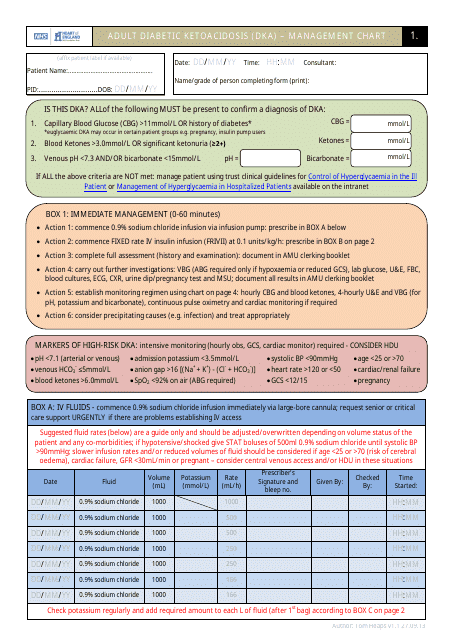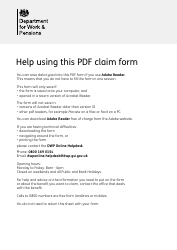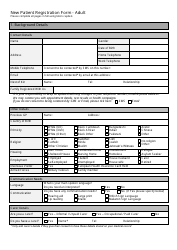Adult Diabetic Ketoacidosis (Dka) - Management Chart - United Kingdom
The Adult Diabetic Ketoacidosis (DKA) - Management Chart from the United Kingdom is a tool used to manage and treat adult patients who suffer from diabetic ketoacidosis, a potentially life-threatening complication that affects people with diabetes. This chart provides step by step guidelines for healthcare providers on how to manage DKA conditions, including assessing the patient's condition, initial treatment approach, monitoring protocols, and measures to prevent further complications. It assists in providing standardized, evidence-based care to ensure optimal patient outcomes. It also serves as a reference guide for medical professionals and caregivers dealing with DKA emergencies.
The Adult Diabetic Ketoacidosis (DKA) - Management Chart in the United Kingdom is typically filed by healthcare providers, specifically endocrinologists or doctors who specialize in the treatment of diabetes. This document is used to track the health status and treatment of adult patients suffering from diabetic ketoacidosis, a serious complication of diabetes. The information includes medical assessments, interventions, and patient's response to management strategies. It is a vital document in ensuring appropriate and effective care is given to the patient.
FAQ
Q: What is Diabetic Ketoacidosis (DKA)?
A: Diabetic Ketoacidosis (DKA) is a serious diabetes complication where the body produces excess blood acids (ketones). It can occur when a diabetic person's blood sugar is dangerously high and can lead to a coma or even death if not treated promptly.
Q: What is the management chart for Adult Diabetic Ketoacidosis in the United Kingdom?
A: The DKA management chart is a systematic guide that helps healthcare professionals in the UK manage this condition in adults. It includes steps like initial assessment, emergency management, monitoring, and longer-term treatment strategies.
Q: How is DKA treated in the UK?
A: In the United Kingdom, DKA is treated with techniques like fluid replacement to treat dehydration, insulin therapy to lower blood glucose levels, electrolyte replacement, and close monitoring to prevent further complications.
Q: What are the symptoms of DKA?
A: Symptoms can include extreme thirst, frequent urination, nausea or vomiting, abdominal pain, fatigue and weakness, shortness of breath or fruity-scented breath, confusion, and high blood sugar levels.
Q: How to prevent DKA?
A: DKA can be prevented by managing blood sugar levels, taking insulin as prescribed, testing blood sugar and ketone levels regularly, and having a sick day management plan.
Q: What to do when someone is suspected of having DKA?
A: If someone is suspected of having DKA, in the UK, they should seek medical attention immediately. Health professionals there have a structured protocol to handle DKA.
Q: How prevalent is DKA in the UK?
A: In the UK, diabetic ketoacidosis (DKA) is a common cause of hospitalization in diabetes patients. The frequency is higher in people with type 1 diabetes.












